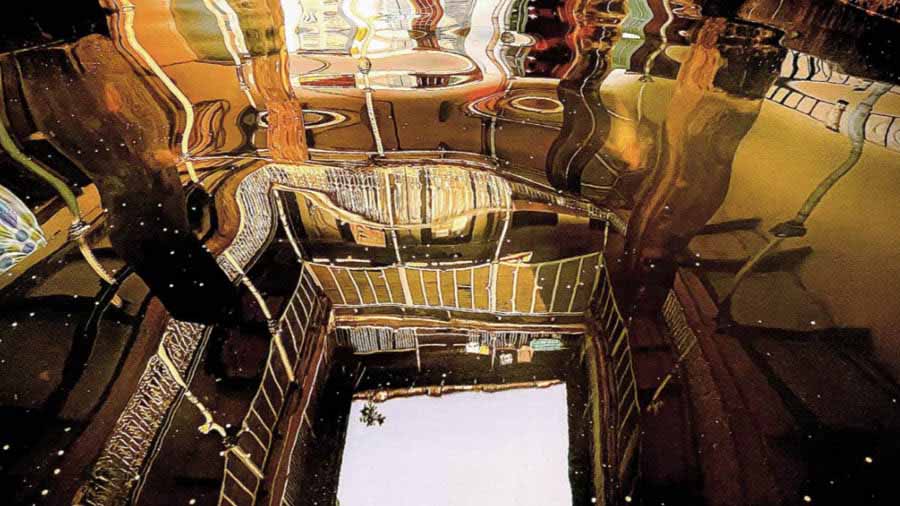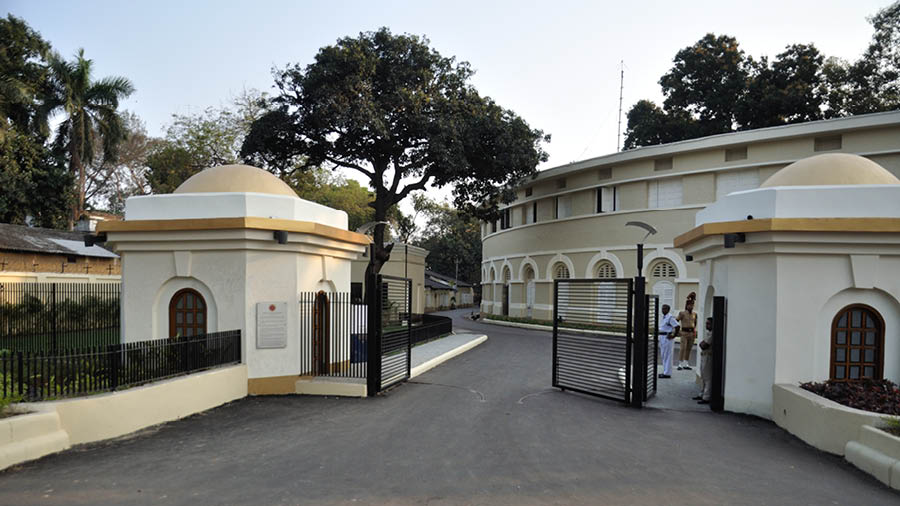If I were to showcase Calcutta to Calcuttans (assuming you wouldn’t want to see ‘VM’ the 84th time) with a new pair of eyes, these are the five places (for the moment) I would take them to.
Madho Bhavan, Mahatma Gandhi Road

Last year, I asked some acquaintance living on Chittaranjan Avenue to locate an octagonal structure in their neighbourhood. They couldn’t. ‘Poochtay hain? They said. Until I came across Madho Bhavan. Forget the octagonal design, forget the year (1922), forget that this was possibly the first stop of hundreds of off-the-Howrah Station types from Rajasthan before they ventured into the big city. Just focus. On getting the symmetry right. On getting the light play right. On getting a bird in your frame. On getting the lone woman walking its deserted corridors to occasionally put her head out beyond the verandah line to look down curiously on 5.30am iPhone holders.
Jadunath Mullick’s Rajbari, Pathuriaghat Street

This structure in two words? ‘Time freeze’. The only dalan (possibly) with metal arches inside, on which they hung (possibly) purdahs and shamianas for women before a performance (jalsha). Their version of the English tea party. There is a faded yellow splendour all across, complemented by the faded brown. If the place were Berger-ed, it would be the end of its magic and the place would then be like Thanthania bari. The owner of this mansion engaged a zebra to drive his buggy through Calcutta (pictures do the WhatsApp round every few months). My recommendation is that anyone who chances upon this relic must select a corner, sit in silence, imagine the decades ripple past, a woman of the household issuing a call to a servant on the ground floor to hurry or a dhoti-clad senior walking up and down contemplating Sarat Chandra. Until Rajatbabu interrupts with a gentle request: ‘Selfie?’
Calcutta Bungalow, Radhakanta Jew Lane

I often take visitors from the airport directly to CB. It is really no place to visit if you go by the spread (few hundred square feet); it is possibly the most intimate place to visit by scope. The place has been embroidered into the 1900s inch by inch. Each room has been themed around trades and professions. It is modern luxury blended with sepia grace. I can catch ‘Koi hai?’ in the air; I can pick the stray of a ‘Chhota haziree, saab’ late afternoon; I thought I heard ‘Boy?!’ the last time I went. I often dream of sprawling lazily in the bathtub of the angrez saheb’s room, soaking Vivaldi into my mind and getting the scalp massaged. It would be the ultimate fursat that destiny can’t facilitate anymore.
Barrackpore Fountain, West Bengal Police Academy

This pocket of Barrackore contains a fountain – from Shah Jahan’s time. The story of how it came to be discovered is as compelling as the possibility of shooting a picture of the Downton Abbey-like structure in the background through the fountain’s water spray. The bits I remember from a Soumen Mitra (who restored the property as Commissioner of Police) conversation: ‘Brought from Delhi by a Governor General in the 1840s – relocated due to water access issues – then lost over the years – ordered a find – discovered under debris – extracted and restored – now working as if new.’ The only damn problem is that one would need to drive 90 minutes to get there.
Jorabagan Traffic Guard, Sovabazar Street

There are three ways to savour JTG. Go around 11am when you get the sun high enough for it to slant fascinating first floor verandah grill shadows on to the red cement zameen. Then walk to the ground floor and face the façade with the water tank in between. The pre-noon-ish sun falls strongly on the back façade of this structure – grills and all – to cast a reflection on the water tank. Get naughty. Disturb the water surface. Then step back and catch the reflection. It would be the nearest a picture could get to a painting. And then there is always the evening picture of uplighters on the front facade.
To be continued…


